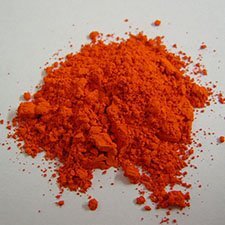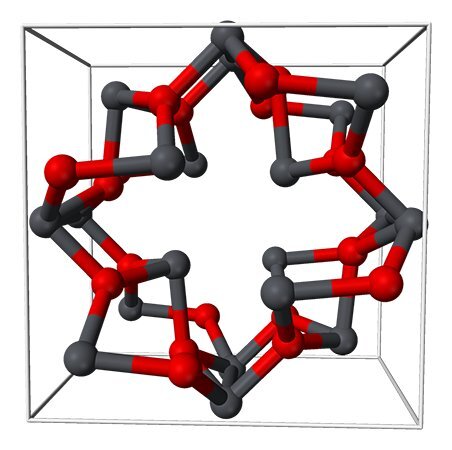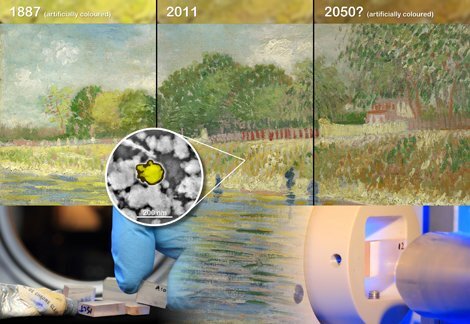Red lead is most familiar to us in orange-red rustproof paint. However, artists have treasured the brilliant color of this pigment for their paintings since ancient times. This pigment is known to undergo several discoloration phenomena.

These transformations are either described as darkening of the pigment caused by the formation of either plattnerite (β-PbO2) or galena (PbS) or as whitening by which red lead is converted into anglesite or (hydro)cerussite. X-ray powder diffraction tomography, a powerful analytical method that allows visualization of the internal distribution of different crystalline compounds in complex samples, was used to investigate a microscopic paint sample of the painting ‘Wheat Stack under a Cloudy Sky’ by Vincent van Gogh (1889, oil on canvas, Kröller-Müller Museum, the Netherlands).

The very rare lead mineral, plumbonacrite (3PbCO3.Pb(OH)2.PbO), was revealed to be present. This is the first reported occurrence of this compound in a painting dating from before the mid 20th century. Based on these new insights, a possible reaction pathway is proposed by which red lead loses its red color under the influence of light and carbon dioxide: Irradiation with light causes electrons to move from the valence band to the conducting band in the red lead, which is a semiconductor. This initiates reduction of the red lead to PbO. Subsequently, CO2 is absorbed gradually from the air and/or from degradation products of the binding medium from the oil paint. This forms plumbonacrite as an intermediate that is converted to hydrocerussite and then to cerussite (lead carbonate) upon further absorption of CO2.
